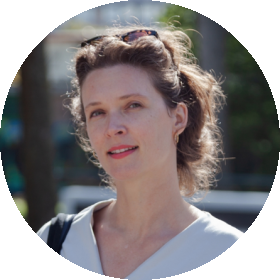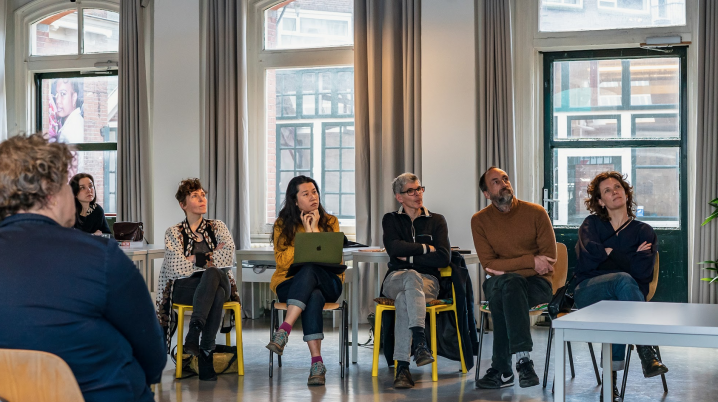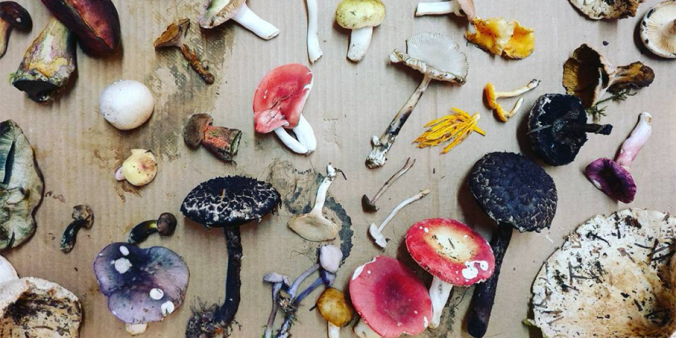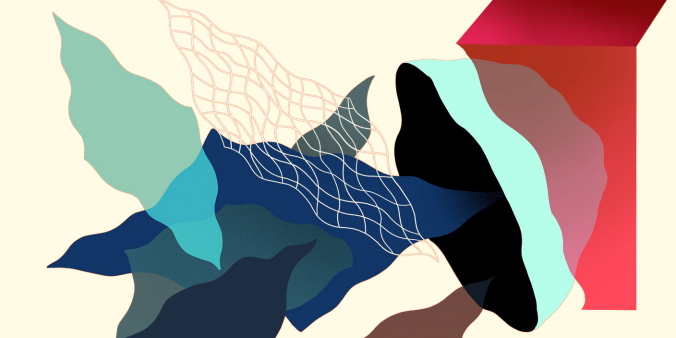Artist-in-residence programmes, besides facilitating artists to create new work, are embedded within a local social and cultural setting. As organisations they can function as catalysts for interaction and possibly, change.
After two years of online interactions, representatives from residency organisations in and outside of the Netherlands came to Rotterdam to explore different organisation models. They also learned about the neighbourhood dynamics of Rotterdam South, the gentrification process it is going through, and the emerging artistic clusters in the area.
The programme included site visit to artist residencies Rib and Pavilioen Charlois aan het Water, followed by a presentation and workshop session in the afternoon at Het Gemaal op Zuid, a neighbourhood co-op and cultural platform.
Rib: Challenging institutionalisation
Rib is an arts space located in a former butcher shop. Their aim is to create space for young artists with an interdisciplinary practice, who like to connect with the context of the neighbourhood and the city. Rib initiates projects in response to the current gentrification in their area, by reinstating a local newspaper and improving green areas in the neighbourhood. Rib considers itself an active component of the local community. Director Maziar Affrasiabi points out that utilising art as activism - as it confirms the language of neoliberal politics, is something they want to stay far away from, they rather work from its intrinsic capacities.
Rib started in September 2015 without subsidy. After a challenging period Rib is now funded by various local, national and private bodies. To gain financial stability Rib utilised a structure in which the staff had to have other jobs on the side. Maziar underlines that the increasing temporality and precarity in the cultural sector generated by overly bureaucratic subsidy and social security systems have direct effects on artists, organisers and institutions as a whole. That is why many arts organisations of different sizes find the solution in employing alternative economic models in order to sustain, which is often quite abrasive.

Restaurant in the summer, residency in the winter
Paviljoen Charlois aan het Water is a non-profit space functioning as an arts residency in the winter, and restaurant in the summer. Committed to a sustainable connection between the port and the neighborhood, residents engage in programming activities along the quay and vacant buildings.
The space is run by Kamiel Verschuren, an artist and producer focusing on public domain and urban space. Kamiel explains that the financial sustainability of the organisation is based on a circular model: The restaurant prices are kept low so the local residents would easily come, and the income generated through the restaurant is spent for the maintenance of the space and its program, together with the funding from local bodies. This way, the enterprise returns to the people in the form of artistic production and educational programmes. A valuable asset for the neighbourhood since it is a neglected area, as Kamiel underlines. That is why the residents are asked to produce “public art,” in which the neighbours can easily engage.
Since the organisation invests in long-term relationships, there is no open call. Artists sign up for a residency through word of mouth, and they often return. As a consequence guest dinners are organised twice a year to bring their community together.
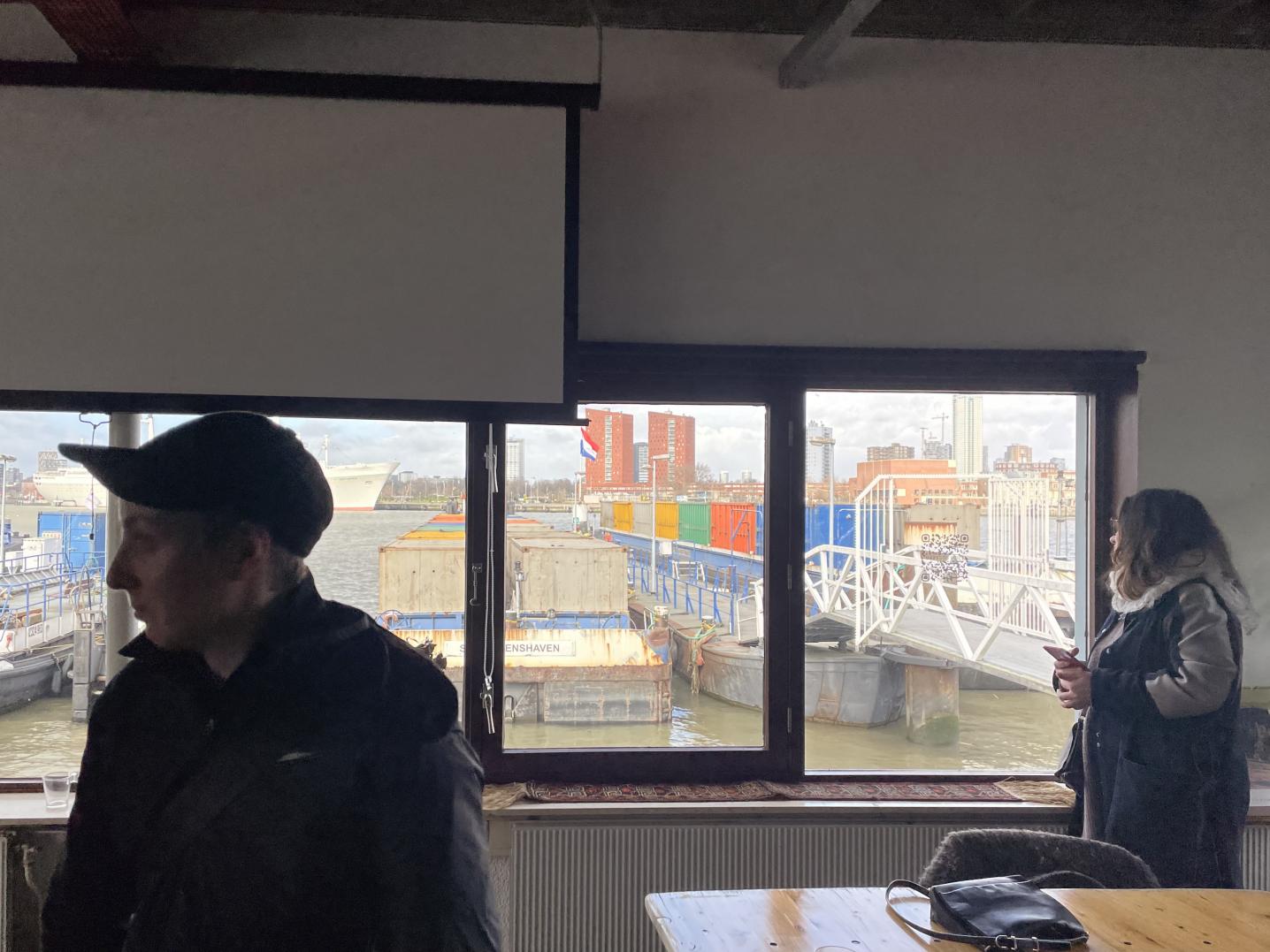
Gemaal op Zuid: A community co-op
After a welcome and introduction by Heidi Vogels of TransArtists AiR Platform NL, Janneke Absil, cultural programmer of the Afrikaanderwijk Cooperative, presented the daily practice of a neighbourhood-common at Gemaal op Zuid.
Afrikaanderwijk consists of a diverse community with 85% of its residents having a migratory background, accommodates a high rate of social housing by 80%, and has the highest unemployment rate in the city. Hence, the Cooperative focuses on creating local value and circulation by activating different stakeholders of the community.
For example, a circular model was implemented at the local market. Artistic interventions by local artists increased the vibrance of the marketplace. This resulted in more income for the sellers of local goods and services. Jobs were created by assigning the task of cleaning up after the market. And a re-cycle station was installed to repurpose waste of food and packaging materials, next to
As witnessed at each organisation, maintaining economic (also social and environmental) circulation is beneficiary at the local level. Each initiative in their own domain focuses on making their environment more ‘liveable’ in an area that is considered ‘neglected,’ while utilising alternatives to sustain the existence of their own.

Tarot for cultural organisations
Pau Catà is an artist, curator and researcher based in Barcelona, whose practice seeks connections between vernacular and intellectual histories focusing on Mediterranean socio-cultural landscapes. He has recently been awarded a practice led PhD in Art by the University of Edinburgh.
The tarot game Catà presents is a prototype developed in the context of the Reshape Network together with Martinka Bobrikova & Oscar de Carmen, Petr Dlouhy, Heba el-Cheikh, Gjorgje Jovanovik, Marta Keil, Dominika Święcicka, Marine Thévenet and Ingrid Vranken. This group called ‘Transnational and Postnational Practices’ has been exploring how to put connection before movement in a transnational art practice.
During the last session of the day, the participants played the tarot game in groups to practice how crucial issues or dire straits can be addressed by posing questions differently. Each group determined questions of a common interest concerning the future, and interpreted the images and references on the cards together with a facilitator.
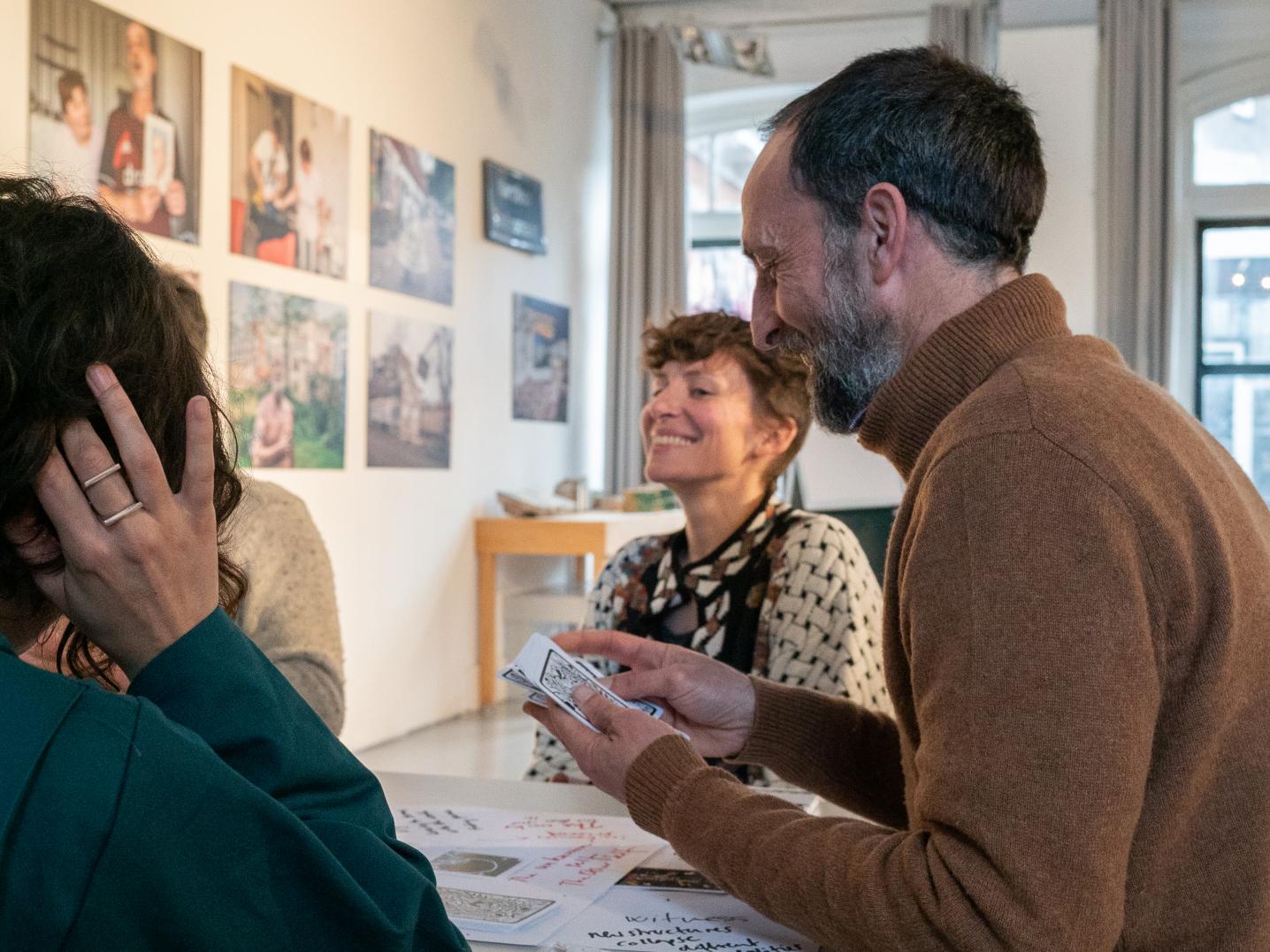
Accordingly, each group shared the issues and questions they discussed, and their interpretation of the cards drawn. This phase resulted in a conversation in which the participants shared examples of similar issues in their organisations.
How can we deepen and revitalise our relationships? How do we live together in peace? How to create a sustainable future for our organisations?
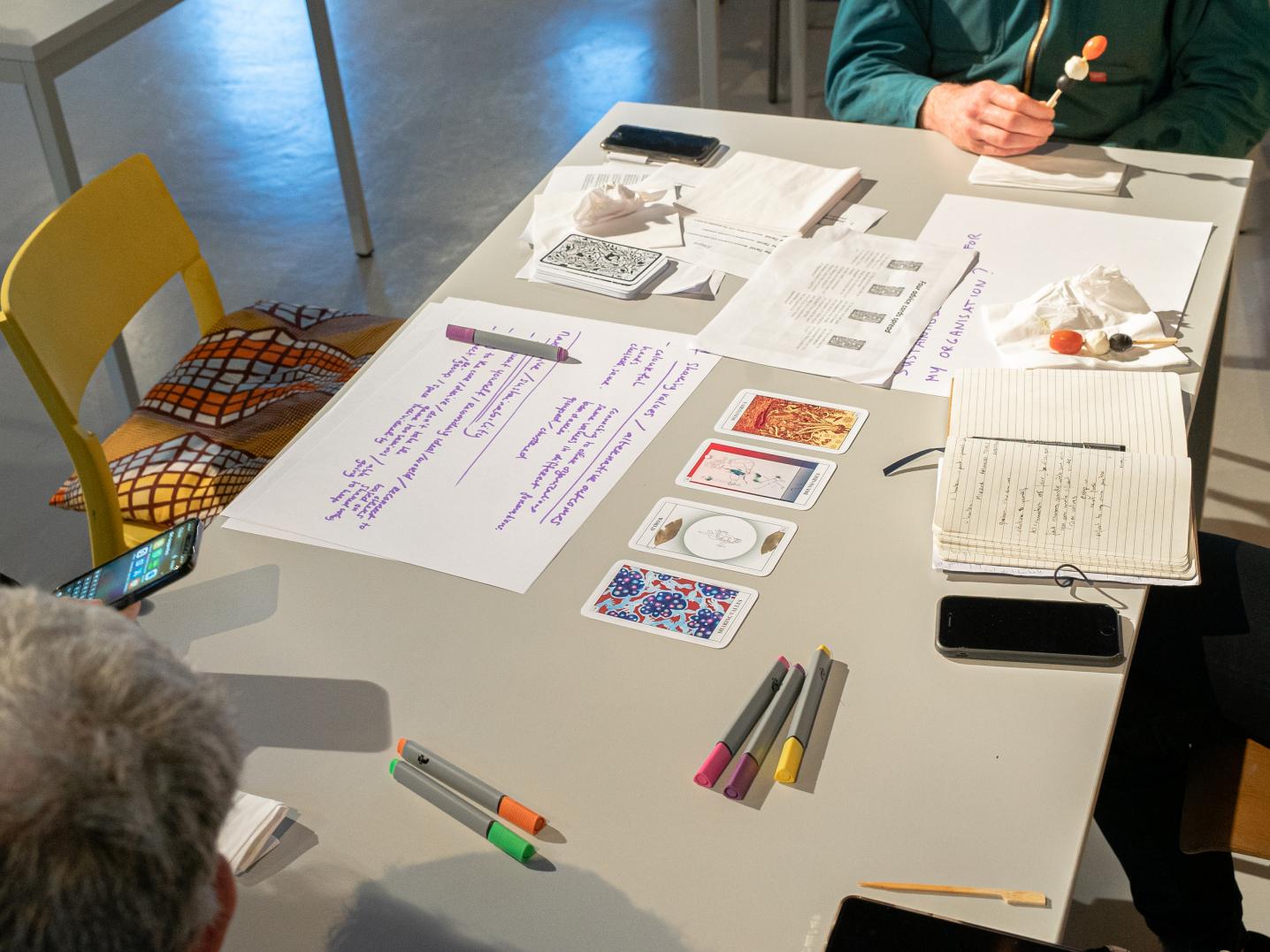
The tarot cards are indeed not there to provide definitive answers to all these questions, but it is a method to gamify the problems that individuals or organisations deal with. It works as a stimulator to think both individually and collectively, breaking the boundaries in organisations and deactivating the hierarchy structures.
Conclusion
Artist residencies appear in many sizes and structures, therefore, the issues they deal with can be quite diverse depending on many factors, such as the cultural sphere they are based in, cultural policy implemented in their operational area, funding schemes they have, etc. However, regardless these differences, they also share many mutual objectives, concerns, and domains.
During Restructure and Connect II, residency organisers from various contexts had the chance to share the common pitfalls they were facing, and to learn about the best practices of each other in terms of designing and implementing new solutions for their organisational and individual challenges. Especially towards the end of a global health crisis, residency organisers tackled the emergency of restructuring in solidarity once again to avoid further issues that are rooted in the precarity of the cultural sector and society at large.

